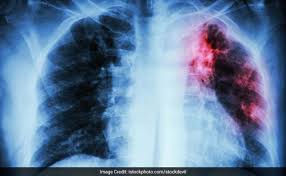At this month’s presidential debate, all eyes were on the candidates, not just for their words but for every gesture, including their handshake. While a firm handshake often conveys confidence and strength in the United States, your grip strength holds far more significance than just first impressions. According to experts, it can be an important indicator of overall health, including the condition of your heart and blood vessels.
“Grip strength is a big indicator of health,” says Milica McDowell, a Montana-based doctor of physical therapy. “It tells us about muscular endurance, power, and bone health in the upper extremities.” More than that, it can provide insight into all-cause and cardiovascular mortality, making it a surprisingly reliable predictor of longevity.
Grip Strength as a Health Indicator
Studies have shown that weak grip strength may signal frailty not just in muscles, but also in the cardiovascular system. Darryl Leong, PhD, from McMaster University, spearheaded a study on grip strength as part of his research into unrecognized cardiovascular issues. “Muscles and tissues deteriorate over time, and so does our cardiovascular system,” said Leong. His research, which measured grip strength in over 125,000 adults, found a direct correlation between weak grip strength and poor cardiovascular health.
Using a dynamometer to measure the force of a squeeze, Leong’s team discovered that weak grip strength is often linked to weaker muscles throughout the body, including the heart. While grip strength itself isn’t a direct cause of mortality, it’s a simple and cost-effective way to assess muscle health and, by extension, cardiovascular risk. “You could also measure leg strength as the indicator,” Leong added, “but grip strength is just easier to measure.”
Simple Moves for a Stronger Grip—and Healthier Body
The good news is that frailty, as indicated by a weak grip, isn’t inevitable. Regular exercise, including strength training, can help maintain muscle health as you age. McDowell points out that natural aging reduces grip strength over time, but staying active can slow or reverse this decline.
McDowell suggests starting with basic exercises to improve grip strength, which will also benefit your overall health. Here are some moves to try:
- Shoulder Shrugs: Hold a weight in each hand, arms at your sides, and shrug your shoulders forward, up, back, and down in a circular motion. Do this for 20 to 30 seconds, aiming to increase endurance over time.
- Elbow Rotations: Using a rolled towel, extend your arms and rotate the towel’s ends in opposite directions, simulating wringing out water. This strengthens your forearms and improves endurance.
- Ball Squeezes: Using a tennis ball or stress ball, squeeze and release for 30 seconds with each hand, focusing on both the dominant and non-dominant hand.
By regularly incorporating these exercises into your routine, you can not only improve your grip strength but also enhance your overall muscle and cardiovascular health.
The Importance of Total Body Conditioning
While focusing on grip strength is beneficial, McDowell and Leong emphasize that it’s total body conditioning that ultimately matters. Maintaining good muscle health through regular exercise is key to living longer and healthier. Leong concludes, “Get into a good exercise habit and continue it for your entire lifespan.” After all, much like blood pressure or cholesterol, grip strength is a lifetime measurement that reflects years of habits.
As the presidential debate reminded us, a handshake is more than a greeting—it could also be a window into your health.











